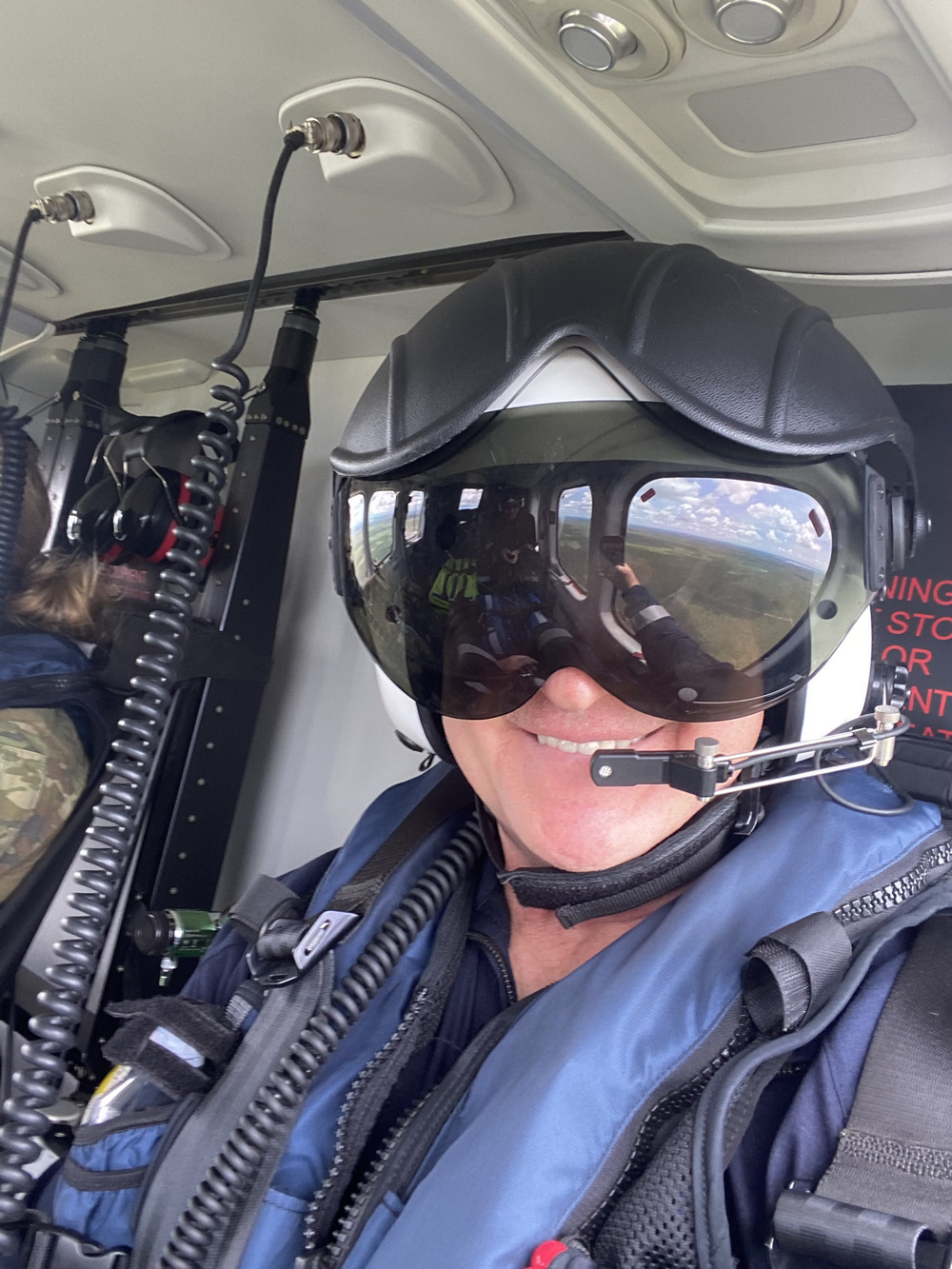
Darwin, Gulmerrogin, Larrakia Country
It was a major vehicular accident on the New England Highway in the early hours of the morning that was the catalyst for Stuart Knight to embark on a career in paramedicine.
The UK-born, former IT programmer was travelling around Australia on a motorbike when he was waved down to help before paramedics arrived on scene.
“I watched the paramedics take control of a seemingly disastrous scene and intubate what appeared to be a very, very sick patient, and when the sun came up that morning, I just went, ‘Wow, I know what I want to do with the rest of my life’.”
In 1997 he joined New South Wales Ambulance, where he served for the next 25 years, predominantly on Sydney’s northern beaches. But it was to the skies that he was drawn, and working on a helicopter was his ultimate career ambition. After topping the exam to become an Intensive Care Paramedic, he wanted “to see how far I could go”.
“Back then, the elite was aeromedical. That's where the clinically best people were working, but of course it was hard to get into, and clinical excellence was not the only criteria. That was the motivation for me. I wanted to be working in an environment where I was clinically and physically pushed to the limit. I needed to go somewhere where I could get on a helicopter.”
“I looked around and saw Medical Rescue had a helicopter up there in Darwin, and I joined them as a remote paramedic working at the Snowy Mountains. Part of my thinking was, they've got a helicopter, it's probably possible. I really enjoyed the remote work; it’s so challenging, so different.”
One day he received a call from Medical Rescue asking if he could take up an urgent short-term position in Darwin working on a helicopter. He eagerly leapt at the opportunity. On his return to the Snowy Mountains, he began studying aeromedical medicine, and three months later was offered a permanent role in Darwin.
“They phoned me up and said, we've got a spot here, we've got a HUET (Helicopter Underwater Escape Training) course, which is quite challenging. I've been here almost two years now on the rescue helicopter.”
Stuart works as Flight Intensive Care Paramedic on an Australian Defence Force (ADF) crash response helicopter.
“Medical Rescue supplies the paramedics on the Toll helicopter, they supply the pilots and the crew, and that resource is contracted to the ADF. That’s our primary role, but we're on the register for AMSA (Australian Maritime Safety Authority) along with LifeFlight and CareFlight. So, it's a two-phase role. It's primarily for helicopter crash response, but we perform other search-and-rescue duties as well.”
In Darwin, there are two helicopter flight teams, working two weeks on and two weeks off. There are four people aboard each flight - two paramedics, a pilot and a crew member who winches them up and down. Medical Rescue is Australia’s busiest international air ambulance service covering the Asia Pacific region, and Stuart said they also regularly took part in international medical retrievals.
He said the highlight of his time thus far with Medical Rescue was a recent offshore retrieval of a patient experiencing chest pain.
“We got called to a boat that was 280km offshore. We had enough fuel to get out there, but we'd have 25 minutes to get winched down, treat the patient, package the patient, and have the patient and ourselves winched up. At which point, if we hadn't achieved that, the helicopter would have had to leave because of fuel - you don't usually go that far out to sea. In fact, one of the crew told me that it was probably one of the furthest out-to-sea rescues that had ever been performed on an AW139 (helicopter).”
Complicating matters was an 18-knot wind throwing up a sizeable swell. The patient was also more than two metres tall, and barely fit into the rescue basket.
“I said later on, when we got into hospital, ‘Have you ever played basketball?’ He said, ‘Yeah, that's how I'm in this position’. He said got hit in the chest when he was a young boy back in Croatia and had a cardiac arrest, and they put him on a beta blocker which slowed his heart rate right down. The beta blocker had been getting the better of him, so he was quite bradycardic and clinically he looked unwell.
“Of course, we had to rule out chest pain. His ECG was normal, everything looked fairly normal, but the protocol for chest pain is that you don't know until you've had an angiogram. He was in obvious pain probably caused by poor cardiac perfusion resulting from his acute bradycardia. We treated his pain, got him back up and flew him back to Darwin hospital.
“That job was challenging in every way, But the pilot, Rich, and the crewie, Cookie, were just amazing. The wind was strong, the ship was moving at 18 knots, and the pilot kept the helicopter perfectly over our spot. The crewie put us down right where we needed to be, and when the hook came down to pick me up, it was right where it needed to be.”
For Stuart, his work with Medical Rescue has rekindled his love of paramedicine. After a quarter-century of shift work on the road, like many of his peers, he was feeling burnt out.
“When I came here, I started studying again and I started reading. I felt like I'd been reborn, I felt excited to be a paramedic again, and that was something I hadn't felt for a very long time. Who would have thought back when I joined the job that we'd be doing ultrasounds, handheld ultrasounds in the back of aircraft. The learning curve is just exponential.
“I now get the opportunity to work with emergency specialists and anaesthetists. I just did an AME (Air Medical Experts) project where I worked with anaesthetists. My appreciation of airway management and paralytic drugs just went through the roof. I'll be going down to do some time with him in theatre where he works full-time to continue my education.
“I think a lot of people in the ambulance service worry that once they move out of that field and that because they're not seeing 10-15 patients every day, that they're going to de-skill or lose their skills. I actually think it's the opposite as without interest and passion for what you are doing, it doesn’t matter if you see 50 patients a day; that’s not going to make you a better paramedic. There are many opportunities in my job to discuss and practice in detail the skills required to stay on top.
“The amount of available learning opportunities these days is limitless, and new learning is what keeps you current, or as the old saying goes, you may have had 20 years’ experience, but is it 20 years or one year repeated 20 times?”

Get unlimited access to hundreds of ACP's top courses for your professional development.
Join Now